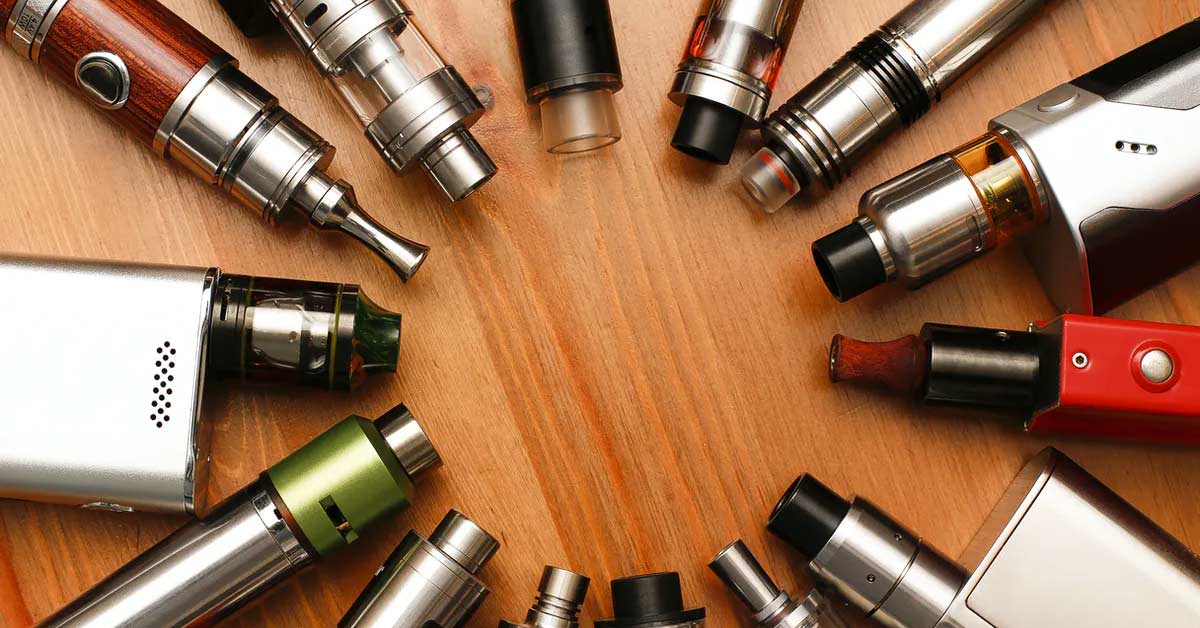You may have heard about vaping, but what exactly is it? According to the Partnership to End Addiction, vaping is inhaling and exhaling the aerosol, or vapor, produced by an e-cigarette. E-cigarettes are electronic devices that heat a liquid and produce an aerosol. They come in many shapes and sizes. Some e-cigarettes look like traditional tobacco products, like cigarettes, cigars, and pipes. Others look like USB drives or pens. Larger e-cigarettes have tanks and don’t look like traditional tobacco products. Most e-cigarettes have a battery, a heating element, and a reservoir to hold liquid.
E-cigarettes are called many different names:
- E-cigs
- E-hookas
- Mods
- Vape pens
- Vapes
- Tank systems
- Electronic nicotine delivery systems (ENDS)
E-cigarettes work by creating aerosol or vapor by heating a liquid. This liquid usually contains nicotine, along with flavoring and other chemicals. The liquid is often called e-juice, e-liquid, vape liquid, or vape juice. E-cigarette users inhale the aerosol into their lungs. Bystanders can also inhale the aerosol second hand when an e-cigarette user exhales.
Read on for five reasons why vaping is unsafe for kids, teens, and young adults.
1. E-cigarettes Contain Nicotine
Nicotine is the addictive drug found in tobacco products, including e-cigarettes. A Centers for Disease Control and Prevention study found that 99% of e-cigarettes sold in the U.S. contained nicotine. Even products with labels that didn’t state that the products contained nicotine and products specifically saying that they didn’t have nicotine were found to contain nicotine.
Nicotine is harmful to the adolescent brain, which keeps developing until age 25. Using nicotine can affect the parts of the brain that control attention, learning, mood, and impulse control.
Nicotine also changes the way that synapses in the brain are formed. A synapse is a strong connection between brain cells that are created when a new skill is learned. A healthy, smart brain has a lot of synapses. Using nicotine affects how synapses are formed.
2. Long-term Effects are Unknown
We’re still learning about the long-term effects of e-cigarettes. Scientists believe that some of the ingredients in vapor may be harmful to the lungs. One example is e-cigarette flavorings. Some e-cigarette flavorings may be safe to eat but not inhale. This is because the gut has different ways of processing substances than the lungs do.
3. Using E-Cigarettes Can Lead to Future Smoking
There is evidence that youth who use e-cigarettes are more likely to smoke traditional cigarettes in the future. This is according to a 2018 National Academy of Medicine report. The report also found that e-cigarette use increases the frequency and amount of future cigarette smoking. However, e-cigarette use is unsafe even if it doesn’t lead to future smoking.
4. E-cigarettes are Marketed to Children and Teens
The same tactics that encourage kids to try traditional tobacco products are being used to advertise e-cigarettes. Advertising is able to use channels that traditional tobacco products aren’t, like television. In 2016, almost 80% of high school students reported seeing e-cigarette advertising.
A lot of e-cigarettes are flavored to taste like fruit and candy, which attracts kids. Many youth e-cigarette users reported starting with a flavored variety and that the flavors were the initial reason to begin using.
Besides flavors and persuasive advertising, there were other reasons youth tried vaping. Many youth reported trying e-cigarettes because of curiosity, the belief that they are less harmful than traditional tobacco products, and the lower costs of traditional tobacco products.
5. E-cigarettes Themselves are Dangerous
Defective batteries in e-cigarettes have caused fires and explosions. A few of these incidents have resulted in serious injuries. The e-cigarette liquid has also proven to be dangerous. Children and adults have been poisoned by the liquid, whether through swallowing, breathing, or absorption through skin or eyes. Throughout the U.S., about half of the calls to poison control centers for e-cigarettes involve children five-years-old or younger.
What Should You Do If You’re Worried About Your Child Vaping?
One way to prevent your child from using e-cigarettes or traditional tobacco products is to schedule an appointment with their healthcare provider, who can tell them about the health risks of using tobacco products. Schedule an appointment today.

